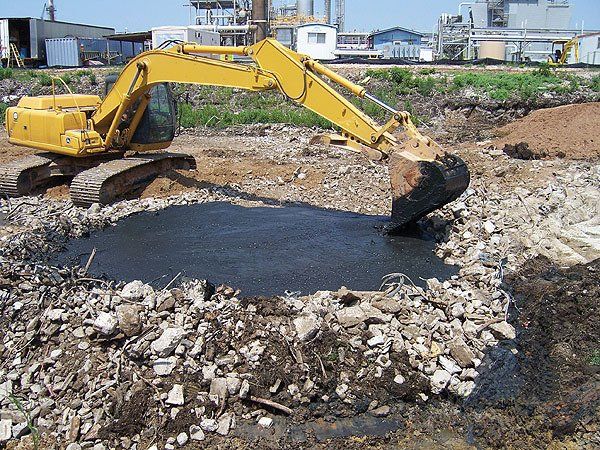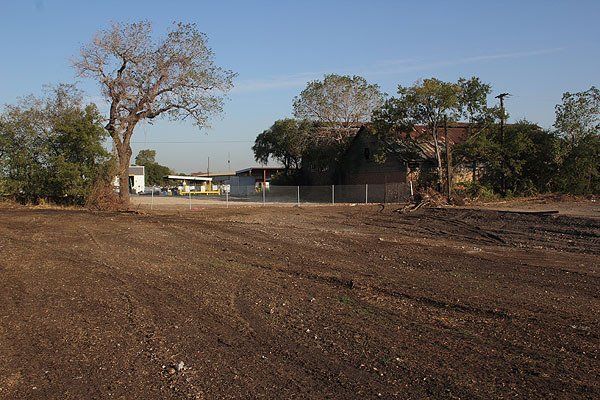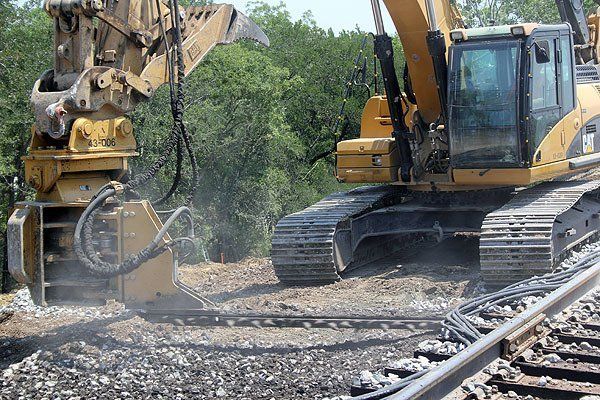hri removes three diesel and lube oil storage tanks
SCOPE
The railroad’s environmental group wanted three diesel and lube oil above-ground storage tanks (ASTs) at a storage yard to be removed. While the 63,000 gallon ASTs were no longer in use, they were still connected by overhead piping to fueling stations and remained a risk for leaking. The group also wanted the tanks’ retaining wall to be demolished.
solution
Hulcher Resources performed the work in three phases. First they vented the tanks and cut access holes. Three workers who were trained in Confined Space Operations cleaned the interiors with a pressure washer to remove residual oil and sludge; the run-off was collected by a liquid vacuum truck and turned over to a licensed waste hauling contractor for disposal. Workers also removed overhead piping from the fueling stations. Hulcher’s environmental trailer provided all the personal protective equipment and tools to do this work safely.
For the second phase, Hulcher deployed two sidebooms to lift the tanks and place them on trucks, which transported them (and the overhead piping) to the scrap yard. A track hoe helped the sidebooms keep the tanks stable as they were moved to the trucks.*
To complete the project, Hulcher deployed a track hoe, cement breaker and back hoe to demolish the retaining wall. They loaded the debris onto trucks for delivery to a cement recycling plant.*
outcome
There is a new open space and the tanks no longer represent a risk for leakage. Hulcher delivered this project on budget and finished it one day ahead of schedule.
* Analysis, containment, treatment, transport, and disposal of material are each conducted in full compliance with relevant federal and applicable state laws/regulations (licensing, permitting, procedural and operational protocol) which sometimes requires the participation of fellow contractors engaged by the customer and/or Hulcher subcontractors.
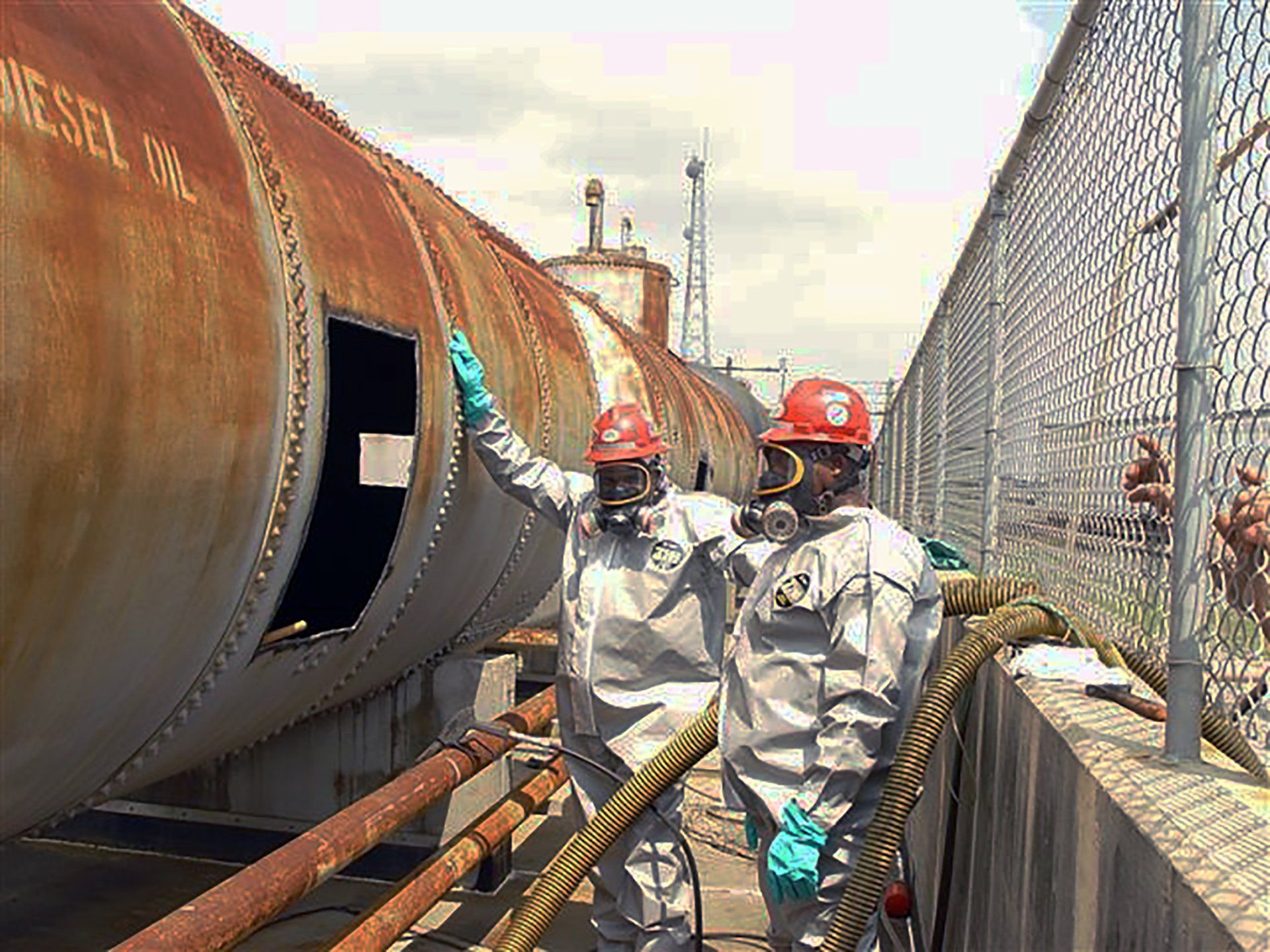
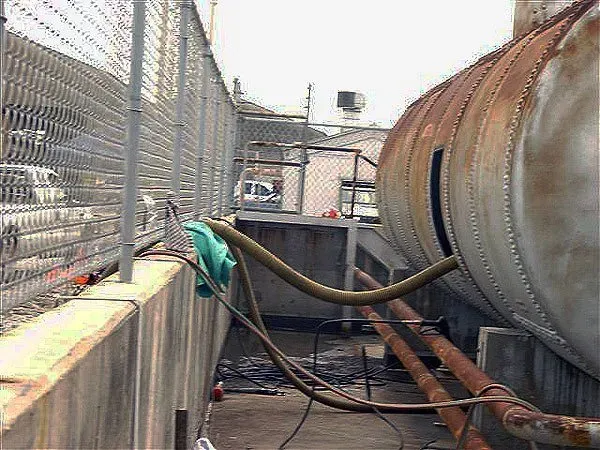
SCOPE
The railroad’s environmental group wanted three diesel and lube oil above-ground storage tanks (ASTs) at a storage yard to be removed. While the 63,000 gallon ASTs were no longer in use, they were still connected by overhead piping to fueling stations and remained a risk for leaking. The group also wanted the tanks’ retaining wall to be demolished.
solution
Hulcher Resources performed the work in three phases. First they vented the tanks and cut access holes. Three workers who were trained in Confined Space Operations cleaned the interiors with a pressure washer to remove residual oil and sludge; the run-off was collected by a liquid vacuum truck and turned over to a licensed waste hauling contractor for disposal. Workers also removed overhead piping from the fueling stations. Hulcher’s environmental trailer provided all the personal protective equipment and tools to do this work safely.


For the second phase, Hulcher deployed two sidebooms to lift the tanks and place them on trucks, which transported them (and the overhead piping) to the scrap yard. A track hoe helped the sidebooms keep the tanks stable as they were moved to the trucks.*
To complete the project, Hulcher deployed a track hoe, cement breaker and back hoe to demolish the retaining wall. They loaded the debris onto trucks for delivery to a cement recycling plant.*
outcome
There is a new open space and the tanks no longer represent a risk for leakage. Hulcher delivered this project on budget and finished it one day ahead of schedule.
* Analysis, containment, treatment, transport, and disposal of material are each conducted in full compliance with relevant federal and applicable state laws/regulations (licensing, permitting, procedural and operational protocol) which sometimes requires the participation of fellow contractors engaged by the customer and/or Hulcher subcontractors.
featured PROJECTS
HRI Remediates Pond at Chemical Manufacturing Facility
A chemical manufacturing facility was closing a pond on their property, and the pond required remediation before it was filled in. They needed a contractor with the expertise and heavy equipment to clean and restore the site.
HRI Remediates 13,500 Tons of Contaminated Soil at Salvage Yard
A five-acre property had previously been used as a salvage yard where battery and metal recycling took place. The property owner needed a contractor to excavate and remediate the contaminated soil at this site
Undercutter Removes Contaminated Soil During Remediation
A 500-foot stretch of track at the railyard was contaminated with soda ash. The affected track surrounded a switch on one of three active and busy lines in that immediate part of the railyard; proper safety procedures and close coordination with the yard traffic managers were essential.
featured PROJECTS
HRI Remediates Pond at Chemical Manufacturing Facility
Record snowfalls and spring rains resulted in major flooding throughout North Dakota. Much of the state was declared a disaster area.
HRI Remediates 13,500 Tons of Contaminated Soil at Salvage Yard
A five-acre property had previously been used as a salvage yard where battery and metal recycling took place. The property owner needed a contractor to excavate and remediate the contaminated soil at this site
Undercutter Removes Contaminated Soil During Remediation
A 500-foot stretch of track at the railyard was contaminated with soda ash. The affected track surrounded a switch on one of three active and busy lines in that immediate part of the railyard; proper safety procedures and close coordination with the yard traffic managers were essential.



